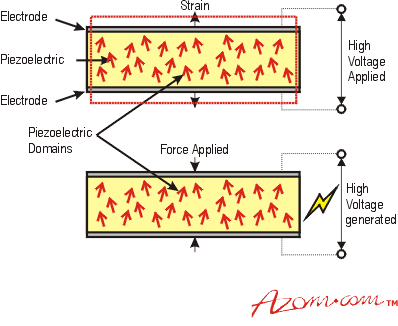 It’s possible that in the future your voice conversations on your cell phone could generate enough electrical power to run the phone, without batteries.
It’s possible that in the future your voice conversations on your cell phone could generate enough electrical power to run the phone, without batteries.
And not just phones. The technology, which converts mechanical stress like vibrations into electrical energy, could power a whole range of low-power mobile devices and sensors.
That’s one possible outcome of recent work by a team of Texas researchers, who appear to have discovered that by building a certain type of piezoelectric material to a specific thickness (about 21 nanometers, compared to a typical human hair of 100,000 nanometers), you can boost its energy production by 100 percent.
Mobile devices and wireless sensors rely on batteries, and most of today’s battery technologies are relatively heavy and expensive, and take up a chunk of valuable real estate. So-called “energy harvesting” technologies can convert one kind of energy, such as vibrations or solar rays, into electricity.
GreenPeak, a wireless sensor startup, unveiled in 2007 a line of products designed with interfaces to various types of commercially available energy harvesters, eliminating the need for batteries in what could be tens of thousands of nodes in a sensor network.
But the new research deals with a scale of energy harvesting hardly contemplated before, a scale measured in billionths of a meter.
When the energy-converting material was constructed to be either smaller or larger than the 20-23 nanometer range, its power output decreased significantly, according to Tahir Cagin, a professor in the Artie McFerrin Department of Chemical Engineering at Texas A&M University.
Piezoelectrics are typically crystals or ceramics that can generate voltage when subjected to mechanical stress. The Science Daily story says this was first discovered in the 1880s by French scientists and has been used in a variety of applications ever since, including in-vehicle cigarette lighters.
But Cagin’s research brings piezoelectrics down to the nanoscale dimension, causing dramatic changes in performance characteristics, in part (from what I can tell) because such thin materials are very sensitive to mechanical stress, such as that caused by vibrations created by a voice.
He’s not alone. Zhong Lin Wang, a professor and nanotechnology researcher at the Georgia Institute of Technology, has been experimenting with pairs of cloth fibers covered with zinc oxide nanowires. Woven into a shirt, the fibers could use the wearer’s body movements to power portable devices. Wang noted that millions of these fiber pairs, each about one centimeter long, would be have to be woven into about 9 square feet of fabric (which would make for a shirt the size of really big poncho)to power an iPod.
Cagin’s research might change that ratio. A component built with optimally sized piezoelectric for maximum energy conversion could potentially run a cell phone based on vibrations from your voice, or other mobile devices, perhaps based on motion or typing on a keypad.
As Science Daily points out, “The Defense Advanced Research Projects Agency has investigated methods for soldiers in the field to generate power for their portable equipment through the energy harvested from simply walking. And sensors – such as those used to detect explosives – could greatly benefit from a self-powering technology that would reduce the need for the testing and replacing of batteries.”
loading...
loading...

Do you do blogroll exchanging? If you want to exchange links let me know.
Email me back if you’re interested.
loading...
loading...
Funny thing is, I had this idea many years ago when the discovery of the Incan temples in the Peruvian Mountains showed that they had this type of technology.
loading...
loading...